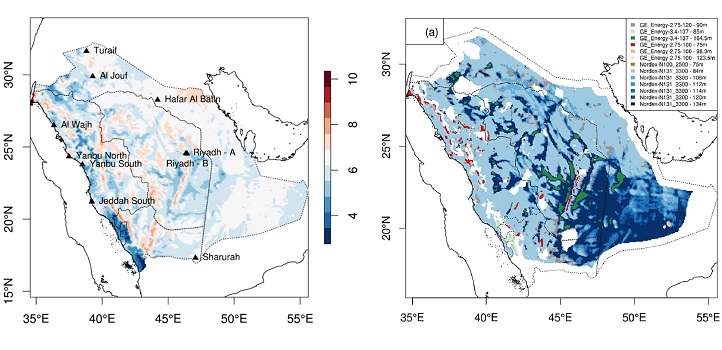Statistics
Blueprint may power up KSA’s wind energy future
High-resolution analysis of wind speed across Saudi Arabia can help fast track the expansion of the Kingdom’s emerging world-class wind energy industry.

A five-year study of wind energy potential in Saudi Arabia has culminated in a comprehensive blueprint for progressing the Kingdom’s national wind energy strategy. Exhaustive high-resolution modeling was combined with a unique set of wind and weather observations and analysis of land-use restrictions, cost and technologies to guide the optimal buildout of wind turbines.
The program was led by KAUST’s Marc Genton in close collaboration with atmospheric simulation experts at the University of Notre Dame in the USA. “Through our novel methodology and ad-hoc computer simulations, we have accurately quantified wind energy resources in Saudi Arabia and have provided a detailed plan for a cost-effective implementation of the government’s wind energy target of 16 gigawatts of installed capacity by 2030,” says Genton. “Our work shows that Saudi Arabia is well positioned to become a role model for wind energy development in the Middle East and worldwide.”
The reliable calculation of wind energy resources is a prerequisite for the development of a strong wind energy industry. Although wind energy potential has been rigorously quantified in many developed countries, this critical step remains a major obstacle for many emerging economies due to the lack of widespread wind monitoring data and well-developed high-resolution atmospheric models.

Four-year average wind speed (left) and optimal wind turbine technology (right) for Saudi Arabia.
Reproduced under a Creative Commons licence from reference one © 2020 Genton et al.
“We spent five years researching the right methodology and the most appropriate simulations and finding suitable ground data,” says Genton. “We also engaged with collaborators at the University of Notre Dame, who had a lot of expertise in simulating atmospheric phenomena at regional scales with computer models. With their simulations and help in developing new methods, we are able to accurately characterize the weather occurring in the atmosphere at spatial scales of up to thousands of kilometers.”
Genton points out that typically, the main challenge of such studies is how to validate the computer simulations against measured data. Fortunately, the researchers were able to make use of the highly detailed wind and atmospheric measurements recorded through the King Abdullah City for Atomic and Renewable Energy (KA-CARE) program.
“The KA-CARE dataset was a game changer in showing that our model simulations provide accurate results,” says Genton. “Our findings can now be used by policymakers to efficiently plan for the development of wind energy infrastructure, and our generalizable methodology can be used by the scientific community to identify optimal locations and the most suitable technological options for wind energy harvesting in other contexts and other countries.”
References
-
Giani, P., Tagle, F., Genton, M.G., Castruccio, S. & Crippa, P. Closing the gap between wind energy targets and implementation for emerging countries. Applied Energy 269, 115085 (2020).| article
You might also like

Statistics
Joining the dots for better health surveillance

Statistics
Easing the generation and storage of climate data

Statistics
A high-resolution boost for global climate modeling

Applied Mathematics and Computational Sciences
Finer forecasting to improve public health planning

Bioengineering
Shuffling the deck for privacy

Bioengineering
AI for cells helps illuminate their identity

Applied Mathematics and Computational Sciences
Global look at sex differences in young people's mortality

Applied Mathematics and Computational Sciences




